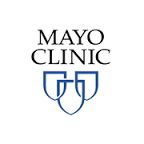Study: 3D-printed models improve shared decision-making before colorectal surgery

Editor's Note Using 3D-printed anatomical models during preoperative consultations significantly improved shared decision-making (SDM) and modestly reduced anxiety in colorectal surgery patients, according to a June 3 study published in JAMA Network Open. The single-center, cluster randomized clinical trial enrolled 51 adult patients scheduled for colon or rectal resection due…
Study: 3D-printed models improve shared decision-making in colorectal surgery

Editor's Note Research shows using 3D-printed anatomical models during preoperative counseling can improve patients’ involvement in shared decision-making (SDM) and reduced anxiety ahead of colorectal surgery, although only the improvement in SDM met the study’s threshold for clinical significance. Published June 3 in JAMA Network Open, the single-center trial included…
AR headsets are reshaping OR operations with lower costs, higher precision

Editor's Note Surgeons across top US health systems are swapping traditional monitors and even robotic systems for augmented reality (AR) headsets, which are streamlining procedures, enhancing precision, and slashing costs, Modern Healthcare May 27 reports. As detailed in the article, AR headsets are rapidly emerging as valuable surgical tools. From…
Augmented reality gains FDA nod, 10k-case milestone in orthopedics, strides in outpatient surgery

Editor's Note Augmented reality (AR) guidance keeps surging in perioperative practice: Pixee Medical just secured FDA 510(k) clearance for its Knee+ NexSight system for total knee arthroplasty, while Augmedics’ xvision platform has already guided 10,000 US spine surgical procedures and is rolling out a new CT-Fluoro registration upgrade. According to…
FDA clears AI platform for real-time surgical measurements

Editor's Note What is reportedly the first technology to allow dynamic, 3D, segmental visualization of anatomy during surgery earned a second 510(k) clearance from the US Food and Drug Administration, according to an April 8 press release from developer Proprio. Designed to let surgeons measure progress during surgery without scrubbing…
Digital twin technology aids cardiac surgery at Boston Children's Hospital

Editor's Note Boston Children's Hospital uses digital twins of patients' hearts to improve cardiac surgery precision and ensure positive outcomes, according to an October 15 report in The Washington Post. Digital twins—computerized replications of physical objects and systems—enable surgeons to simulate complex procedures on virtual 3D heart models before making…
In-house 3D printing reduces hospital surgery times, costs

Editor's Note The medical 3D printing market is expected to double from $2 billion in 2022 to $4 billion by 2026, driven by customization, lower costs, and quick turnarounds, according to analysis from GlobalData. In a July 24 report on the analysis, Medical Device Network outlined this growth as well…
3D-printed stem cell patches show promise as heart surgery alternative

Editor's Note Using a patient’s stem cells to 3D-print patches to place over damaged areas of the heart could provide an alternative to invasive surgery, according to new research detailed in a June 9 report from the Australian Broadcasting Corporation (ABC). Although the technology has yet to be tested on…
Mayo Clinic evaluates impact of OR design on team performance, efficiency

Editor's Note Designing ORs with a focus on patient flow, room organization, and the needs of surgical teams can reduce burnout while improving workplace positivity and patient outcomes. That’s according to an April 9 report from Mayo Clinic, where researchers recently integrated 3D space capture technology with traditional focus groups…
3D printed skin breakthrough provides full layers and hair regrowth

Editor's Note A research team from Penn State University is using 3D printing to produce a living system of multiple skin layers that could be used to print tissues during surgery and has the capacity to grow hair. The findings were published November 9 in the journal Bioactive Materials. The…

 Free Daily News
Free Daily News